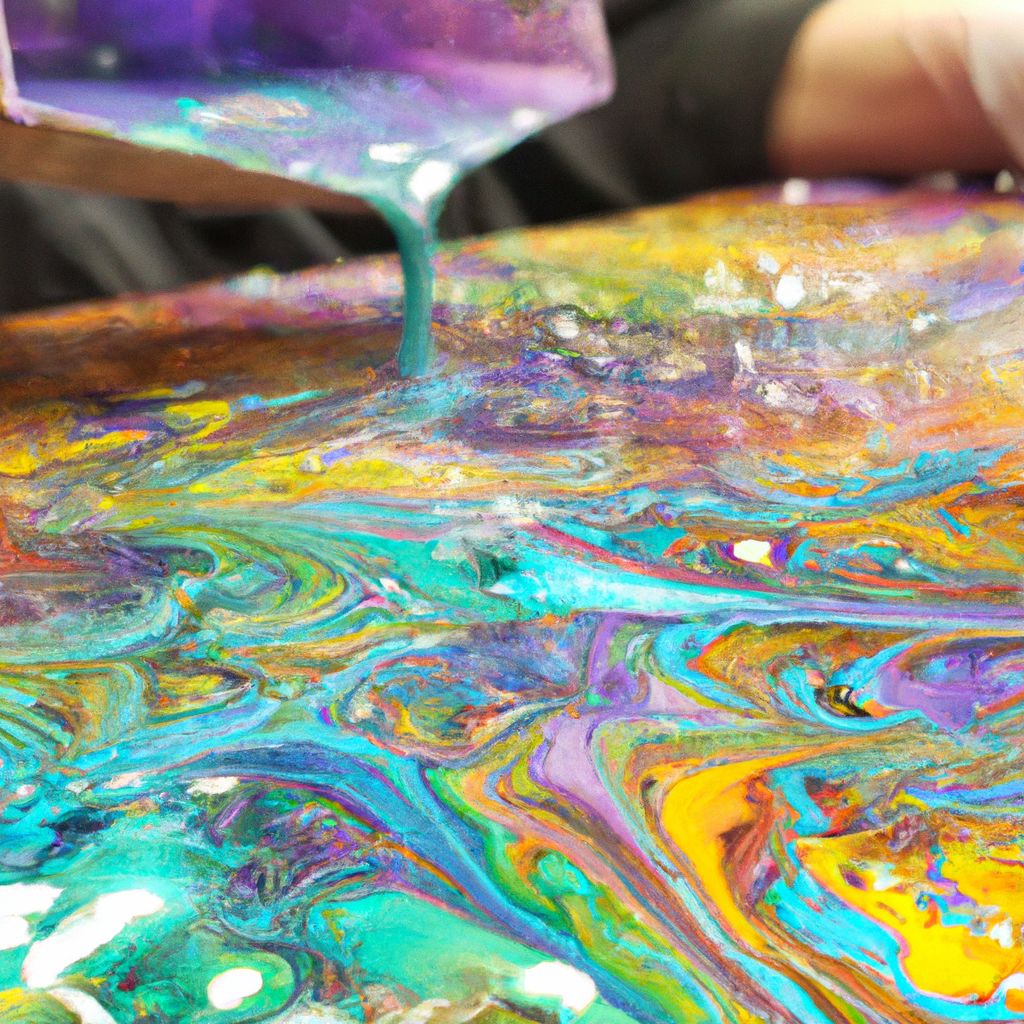Acrylic pouring is a contemporary art form that has gained immense popularity among both amateur and professional artists worldwide. Its unique style, characterized by the fluidity and versatility of acrylic paint, makes it approachable for artists of all skill levels. In this article, we'll delve into the fascinating world of acrylic pouring, discussing its techniques, color combinations, and the therapeutic joy of creating abstract art through this captivating medium.
What is Acrylic Pouring?
Acrylic pouring is a painting technique in which acrylic paint is mixed with various pouring mediums and additives to create a fluid consistency. The paint mixture is then poured, tilted, or manipulated onto a canvas or surface, resulting in abstract and organic patterns that are virtually impossible to recreate. The process relies heavily on the artist's intuition, making every piece unique and one-of-a-kind.

Getting Started: Materials and Tools
Acrylic pouring requires a few essential materials and tools, many of which can be found at your local art supply store or online:
- Acrylic Paints: A variety of colors, preferably in fluid or soft body consistency.
- Pouring Medium: This is mixed with the paint to create a pourable consistency. Popular options include Floetrol and Liquitex Pouring Medium.
- Silicone Oil or Treadmill Lubricant: Adding a few drops of this to your paint mixture can create cells, which are the small circular patterns that appear in acrylic pours.
- Canvas or Surface: Choose a sturdy, flat surface to pour your paint on, such as a stretched canvas, wooden panel, or ceramic tile.
- Mixing Cups and Stir Sticks: Necessary for mixing your paint and pouring medium.
- Gloves: To protect your hands from paint and make cleanup easier.
Techniques for Acrylic Pouring
There are several techniques in acrylic pouring that artists use to create their unique masterpieces. Here are a few popular methods:
- Dirty Pour: This technique involves layering multiple colors of paint in a single cup, then pouring it onto the canvas in a single, fluid motion. The result is a stunning mix of colors and patterns.
- Flip Cup: Similar to the dirty pour, but with an added step. After layering your paint in a cup, place the canvas upside down on top of the cup, then quickly flip the two together. Lift the cup to reveal the paint flowing across the canvas.
- Swipe: In this technique, a base layer of paint is poured onto the canvas, followed by a line of contrasting colors. A tool, such as a palette knife or plastic card, is then used to swipe the contrasting colors across the base layer, creating beautiful patterns and cells.
"The process relies heavily on the artist's intuition, making every piece unique and one-of-a-kind."
Color Combinations and Inspiration
Choosing the right color combination is crucial to the success of your acrylic pour. Consider the following tips when selecting your colors:
- Choose colors that work well together and complement each other, such as analogous or complementary colors.
- Limit your palette to 3-5 colors to avoid muddying your final piece.
- Use contrasting colors to create dynamic and eye-catching patterns.
- Experiment with various shades and tones of the same color for a monochromatic look.
- Seek inspiration from nature, color theory, or other artists' work.
The Therapeutic Joy of Acrylic Pouring
Acrylic pouring is not only a visually stunning form of art but also a therapeutic and relaxing activity. The process of mixing colors, watching the paint flow, and witnessing the unexpected patterns emerge can be a meditative and calming experience. Many artists find that acrylic pouring allows them to release stress, express their emotions, and connect with their inner artist in a way that traditional painting methods may not.

In conclusion, acrylic pouring is an accessible and captivating art form that invites artists of all skill levels to explore their creativity. With its fluid techniques, endless color possibilities, and therapeutic benefits, acrylic pouring is an artistic adventure worth embarking on for anyone looking to unleash their inner artist.


